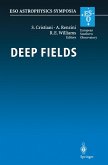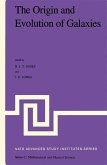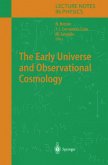This book outlines the fundamentals of this fascinating branch of astronomy, and explores the forefront of astronomical research. The author's passion for the topic shines with an intensity that rivals the book's many colourful illustrations, and will deeply inspire the reader. The cogently written text introduces the reader to the astronomy of galaxies, their structure, their active galactic nuclei, their evolution and their large scale distribution. Starting with a detailed description of our Milky Way, and a review of modern observational and theoretical cosmology, the book goes on to examine the formation of structures and astronomical objects in the early universe.
Review of the German Edition:
This book fills an important gap in astronomy lecture courses. It summarizes the most modern achievements in cosmology, in particular Dark Matter and Dark Energy. I started using it for my introductory astrophysics lectures on the day it appeared.
Prof. Günther Hasinger, Max Planck Institute for Extraterrestrial Physics
During the past years extragalactic astrophysics has made rapid progress. An up-to-date, didactically written summary was not available so far. With its coherent description of the underlying physical principles and the attractive presentation of both the vast observational material and computer simulations, using colorful images throughout, Peter Schneider's textbook fills that gap in an excellent way.
Prof. M. Steinmetz, Astrophysical Institute Potsdam
Pre-Publication Review of the English Edition:
I think this could be a superb textbook for courses on galaxies and cosmology, where, alas, there are not many, and certainly none that are up-to-date in the field.
Prof. John Huchra, Harvard University
From the reviews:
"Extragalactic Astronomy and Cosmology traces the development of our understanding of the structures in the universe from both a theoretical and an observational standpoint. ... A particularly important and attractive aspect of the presentation is the inclusion of well-reasoned descriptions of the fundamental physical principles that underlie the equations. The book is current even though the field is one of rapid development. ... Masterful blending of observation and theory; lucid exposition. Summing Up: Highly recommended. Graduate students through professionals." (D. E. Hogg, CHOICE, Vol. 44 (10), June, 2007)
"Through the richness of the color illustrations and through the deep insight of the content, the book will most certainly lead the reader to the forefront of astronomical research in this very interesting and fascinating domain of astronomy. ... will not only be highly appreciated by undergraduate students in astronomy but also by graduate students and researchers involved in the field who will certainly appreciate its comprehensive coverage. Teachers and lecturers will also consider it as a mine of information and as a reliable reference." (Emile Biémont, Physicalia Magazine, Vol. 29 (4), 2007)
This book fills an important gap in astronomy lecture courses. It summarizes the most modern achievements in cosmology, in particular Dark Matter and Dark Energy. I started using it for my introductory astrophysics lectures on the day it appeared.
Prof. Günther Hasinger, Max Planck Institute for Extraterrestrial Physics
During the past years extragalactic astrophysics has made rapid progress. An up-to-date, didactically written summary was not available so far. With its coherent description of the underlying physical principles and the attractive presentation of both the vast observational material and computer simulations, using colorful images throughout, Peter Schneider's textbook fills that gap in an excellent way.
Prof. M. Steinmetz, Astrophysical Institute Potsdam
Pre-Publication Review of the English Edition:
I think this could be a superb textbook for courses on galaxies and cosmology, where, alas, there are not many, and certainly none that are up-to-date in the field.
Prof. John Huchra, Harvard University
From the reviews:
"Extragalactic Astronomy and Cosmology traces the development of our understanding of the structures in the universe from both a theoretical and an observational standpoint. ... A particularly important and attractive aspect of the presentation is the inclusion of well-reasoned descriptions of the fundamental physical principles that underlie the equations. The book is current even though the field is one of rapid development. ... Masterful blending of observation and theory; lucid exposition. Summing Up: Highly recommended. Graduate students through professionals." (D. E. Hogg, CHOICE, Vol. 44 (10), June, 2007)
"Through the richness of the color illustrations and through the deep insight of the content, the book will most certainly lead the reader to the forefront of astronomical research in this very interesting and fascinating domain of astronomy. ... will not only be highly appreciated by undergraduate students in astronomy but also by graduate students and researchers involved in the field who will certainly appreciate its comprehensive coverage. Teachers and lecturers will also consider it as a mine of information and as a reliable reference." (Emile Biémont, Physicalia Magazine, Vol. 29 (4), 2007)
"Extragalactic Astronomy and Cosmology is a textbook about what and how we know or hypothesise about the Universe and our Galaxy. The book starts out with a short overview of all the strange and wonderful astronomical objects and cosmological ideas that we face in modern science. I enjoyed most the depth and abundance of details provided in the book." (AstroMadness.com, May, 2017)
"An obvious difference from many other roughly similar books is the large number of illustrations, many in colour. ... I recommend the book both to students and to those who work in fields other than those covered by the book ... . It is up to date, quite detailed for an introduction, and the numerous figures with references are particularly useful as jumping-off points to the original literature." (Phillip Helbig, The Observatory, April, 2016)
"An obvious difference from many other roughly similar books is the large number of illustrations, many in colour. ... I recommend the book both to students and to those who work in fields other than those covered by the book ... . It is up to date, quite detailed for an introduction, and the numerous figures with references are particularly useful as jumping-off points to the original literature." (Phillip Helbig, The Observatory, April, 2016)








